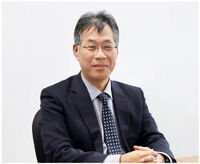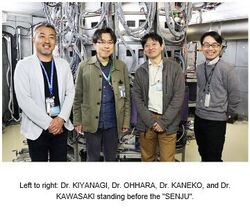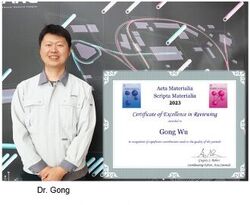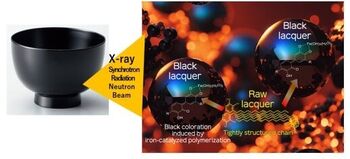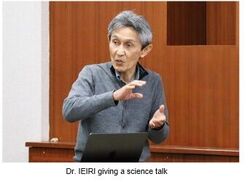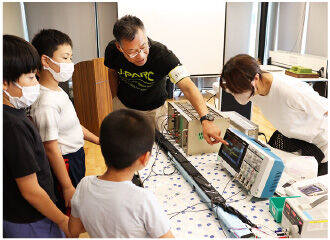J-PARC News April 2024 (Issue #228)
■Inauguration Address of Director of J-PARC Center
I am honored to announce my reappointment as the director of the J-PARC Center, commencing a three-year term on April 1, 2024.
Over the past three years since my appointment in 2021, due to the global pandemic people's movements have been severely restricted. Despite such situation, the RCS accelerator has enhanced the proton beam power to 840 kW, achieving an operating efficiency of over 95%. Additionally, the MR accelerator has surpassed the initial goal by reaching 760 kW of beam power. Moreover, we have been able to collect valuable data through endeavors such as the analysis of samples from the asteroid Ryugu and the examination of the internal structure of fuel cell batteries. I extend my heartfelt gratitude to everyone involved in J-PARC for their dedication, which has yielded significant results despite the adversity.
Looking ahead, with safety placing the highest priority, we keep enhancing beam power to facilitate the commencement of experiments with Hyper Kamiokande, while also advancing the construction of new facilities. Subsequently, we will accelerate our research efforts to unravel the origins of the universe, matter, and life.
April 2024
Takashi Kobayashi, Director, J-PARC Center
■Sawamura Award by The Iron and Steel Institute of Japan
A paper authored by Prof. KOYAMA Motomichi of the Institute for Materials Research at Tohoku University, along with Dr. KAWASAKI Takuro, and Dr. Stefanus Harjo of J-PARC, has been honored with the 2024 Sawamura Award for Best Paper by the Iron and Steel Institute of Japan. The Sawamura Award recognizes the most outstanding contribution among all articles published in “ISIJ International” and “Tetsu-to-Hagane”. This paper delved into the investigation of deformation heterogeneity during Lüders band propagation in Fe-5Mn-0.1C steel, a next-generation steel material. The research utilized neutron diffraction conducted at TAKUMI of MLF, J-PARC.
■JPSJ 2022 Highly Cited Article
“Charge-Density-Wave Order and Multiple Magnetic Transitions in Divalent Europium Compound EuAl4” by Dr. KANEKO Koji, Dr. KAWASAKI Takuro, Dr. OHHARA Takashi, Dr. KIYANAGI Ryoji at J-PARC, published in “JPSJ” by the Physical Society of Japan, was awarded due to one of the ten articles, the most frequent cited in 2022.
The study revealed complex incommensurate magnetic transitions in EuAl4 with a tetragonal structure using the single-crystal time-of-flight neutron Laue technique on SENJU at MLF, leading to a cornerstone for detecting a magnetic skyrmion lattice following EuPtSi.
■Acta Materialia & Scripta Materialia Outstanding Reviewer Award 2023
Dr. Gong Wu of the Neutron Science Section has been awarded the "Outstanding Reviewer Award 2023" for the journals Acta Materialia and Scripta Materialia. Acta Materialia is one of the premier journals in inorganic materials, and Scripta Materialia is a letters journal of Acta Materialia.
In recognition of Dr. Gong’s excellent reviewing activities and his contributions to improving the quality of these journals in 2023, the Editors have selected him for an Outstanding Reviewer Award.
■Elucidating Mystery behind "Darkness of Lacquer" Using Quantum Beam
- Advancing “Lacquer Technique” from Jomon Period, 6500 years ago, to State-of-the-art Application-
Lacquer is a rare natural coating material with such high stability that it remains intact when excavated from archaeological sites dating back to the Jomon period. By utilizing quantum beams such as neutrons and X-rays, which possess different properties, the research team successfully elucidated the nanostructure of lacquer, which is opaque to visible light. Additionally, they revealed the origin of the black color of lacquer, familiar as Japanese traditional artifacts.
This analysis method holds the potential to illuminate the history of the origin of black lacquer. Furthermore, it is expected to contribute to the non-destructive analysis of historical artifacts and the development of new functional materials utilizing lacquer for the next generation.
■Elucidating Behavior of Hydrogen in Semiconductor Material with Muon
- Expectation for Developing Next-Generation Non-Volatile Memory –
Vanadium dioxide (VO2) has been expected to be the next-generation device material that can control electric resistance by using hydrogen. Utilizing muons, one of the elementary particles, that behave like Hydrogen in material, enabled us to elucidate hydrogen dynamics in the nanoscale region of VO2.
The operation of resistive random access memory, one of the applications of VO2, is similar to the mechanism of accessing neural cells in the brain. It has the potential to be applied to the AI's learning system.
■World’s First Observing Water Freezing Process Inside Vehicle Fuel Cells with Neutron
-Significant Contribution to Improve Capability in Subzero Conditions–
For more efficient starting operation of fuel cells in subzero temperatures, it is essential to observe the internal workings of fuel cells during operation in such conditions and understand the behavior of water freezing. The research group has developed a large-scale environmental simulation device for observing with a wide field of view, alongside new technology for highly sensitive differentiation between water and ice. This advancement enables the identification of water and ice inside large fuel cells operating below-freezing temperatures.
■Hello Science (March 22nd)
"Now brought to you, K-mesons.”
Dr. IEIRI Masaharu of the Particle and Nuclear Physics Division introduced the technology to supply precious and useful K-mesons for experiments, at this month's Hello Science.
At the Hadron Experimental Facility in J-PARC, research is being conducted on interactions between baryons and a variety of nuclei, by generating baryons and new nuclei using a beam of K-mesons of enhanced purity.
K-mesons, a key to the research, which do not naturally exist on the earth, must be generated by the reaction between proton beams from MR of J-PARC and the gold target. However, K-mesons are generated only about one per one-thousand various secondary particles generated at the same time. The K- mesons, buried in a large number of pions, are selected using an electrostatic particle separator that generates a high electric field to increase the purity of the K- mesons in the beam.
Here at the J-PARC, scientists are delving into elucidating the history of the universe and the formation of matter further with the world’s purest K-meson beam.
■J-PARC Sanpomichi ㊺ -about the person named KOBAYASHI Takashi-
Can you guess what KOBAYASHI Takashi san, director of the J-PARC, is? Some might depict him as a secluded researcher staring data and documents in his room. Others might imagine him as a busy hasty director strictly directating to young scientists. KOBAYASHI-san is not both. Despite his tall of 180 cm, he does not oppress at all.
He is an authority on neutrino research. Neutrino, the second largest amount of particles following the light in the universe, has long been mysterious because it does without almost any reaction to anything. Dr. KAJITA Takaaki was awarded the Nobel Prize due to the discovery of the atmosphere neutrino oscillation. KOBAYASHI-san substantiated the first in the world that neutrino oscillation occurred by shooting huge amounts of neutrinos generated by the J-PARC accelerators.
Now, as a resesrcher, KOBAYASHI-san aims to substantiate the difference between neutrino oscillation and antineutrino oscillation. It is a tremendously big-scale experiment exploring why unti-matter , which should exist right after the birth of the universe, does not exist now.
KOBAYASHI-san often appears in the local mountains, in the waiting line of ramen restaurants, and the "Muographic Investigation of Ancient Burial Mounds in Tokai" Project in Tokai Village with his favorite J-PARC T-shirt. If you come across him, please don't hesitate to talk to him. He definitely will communicate with you closely.

